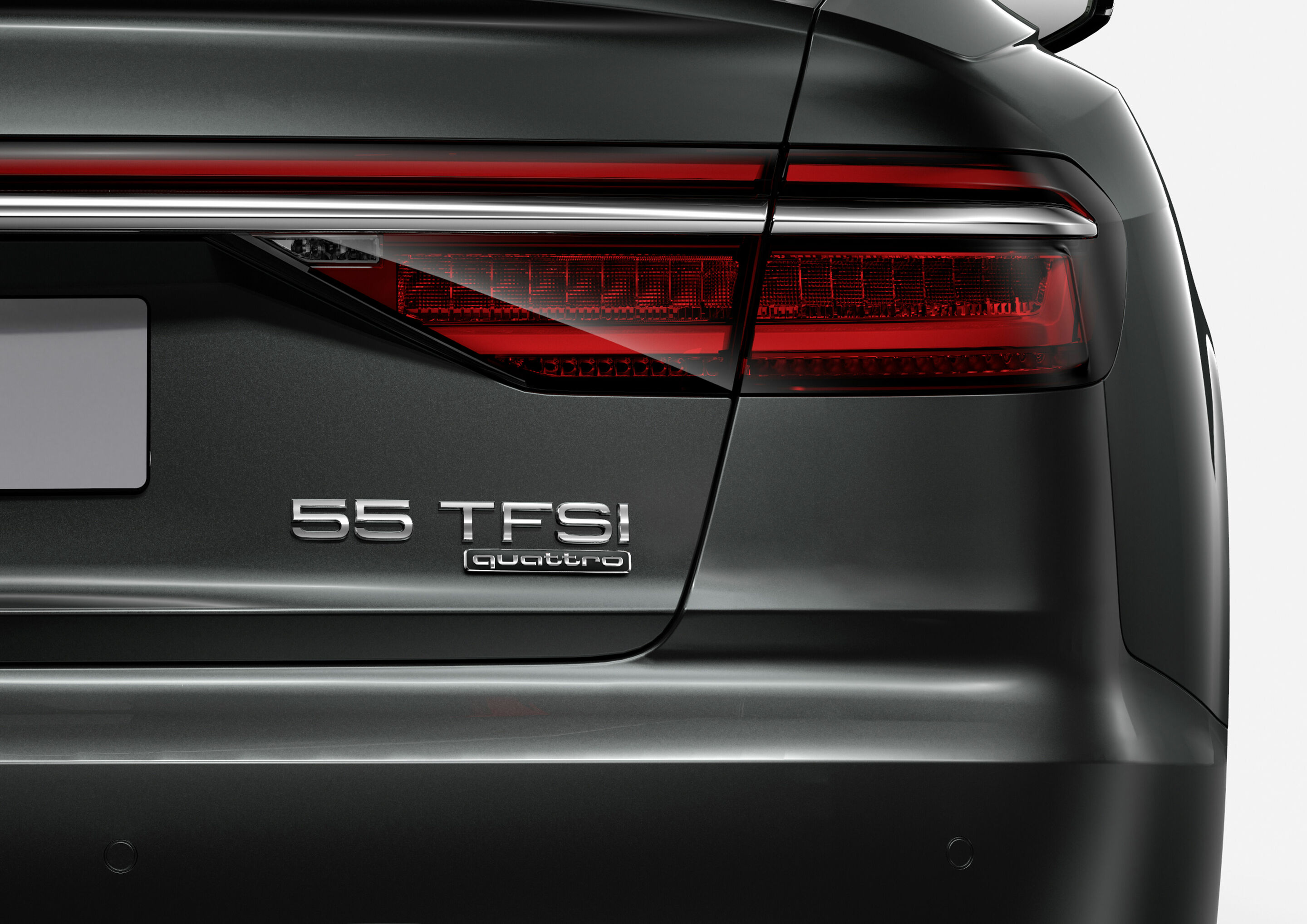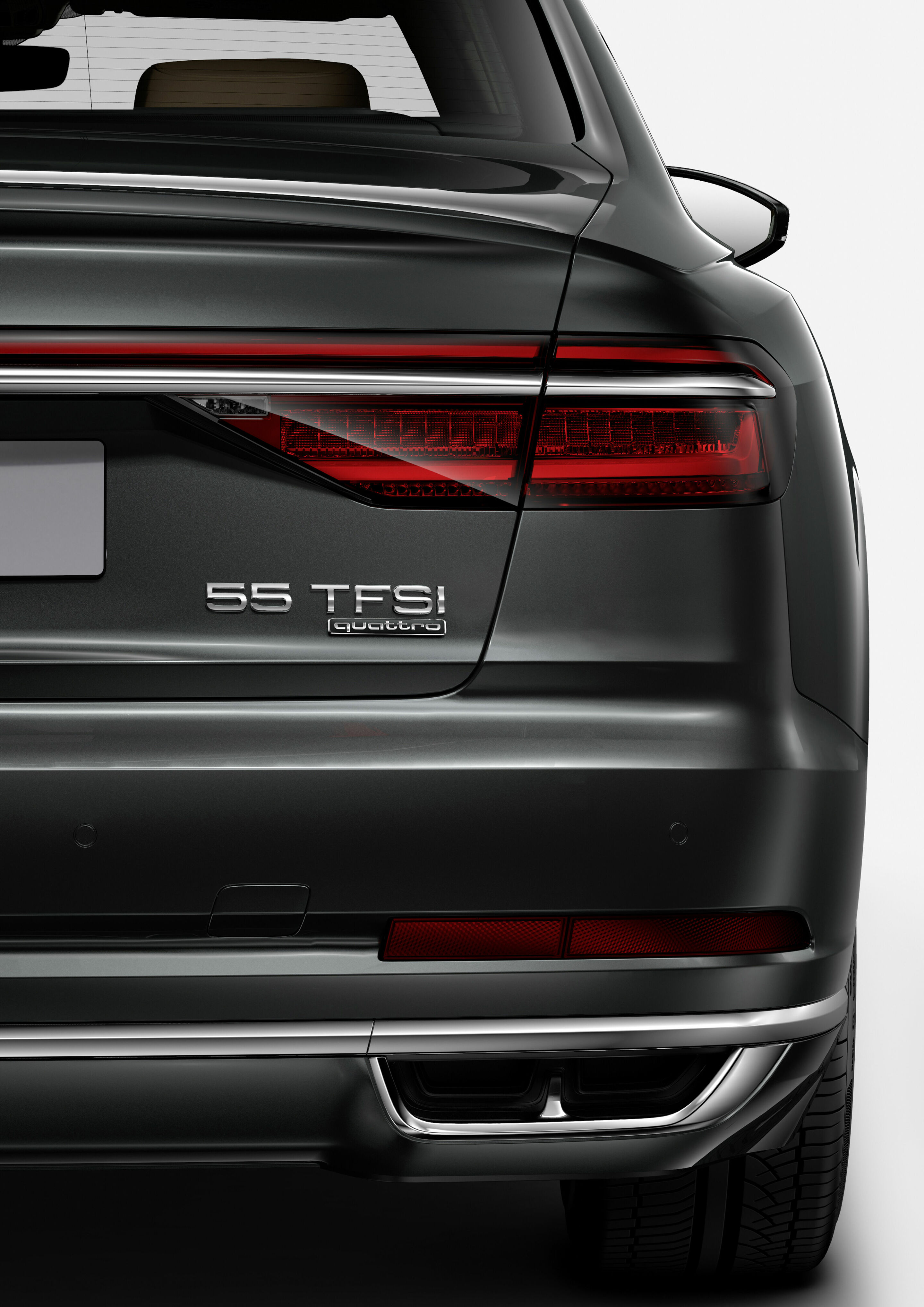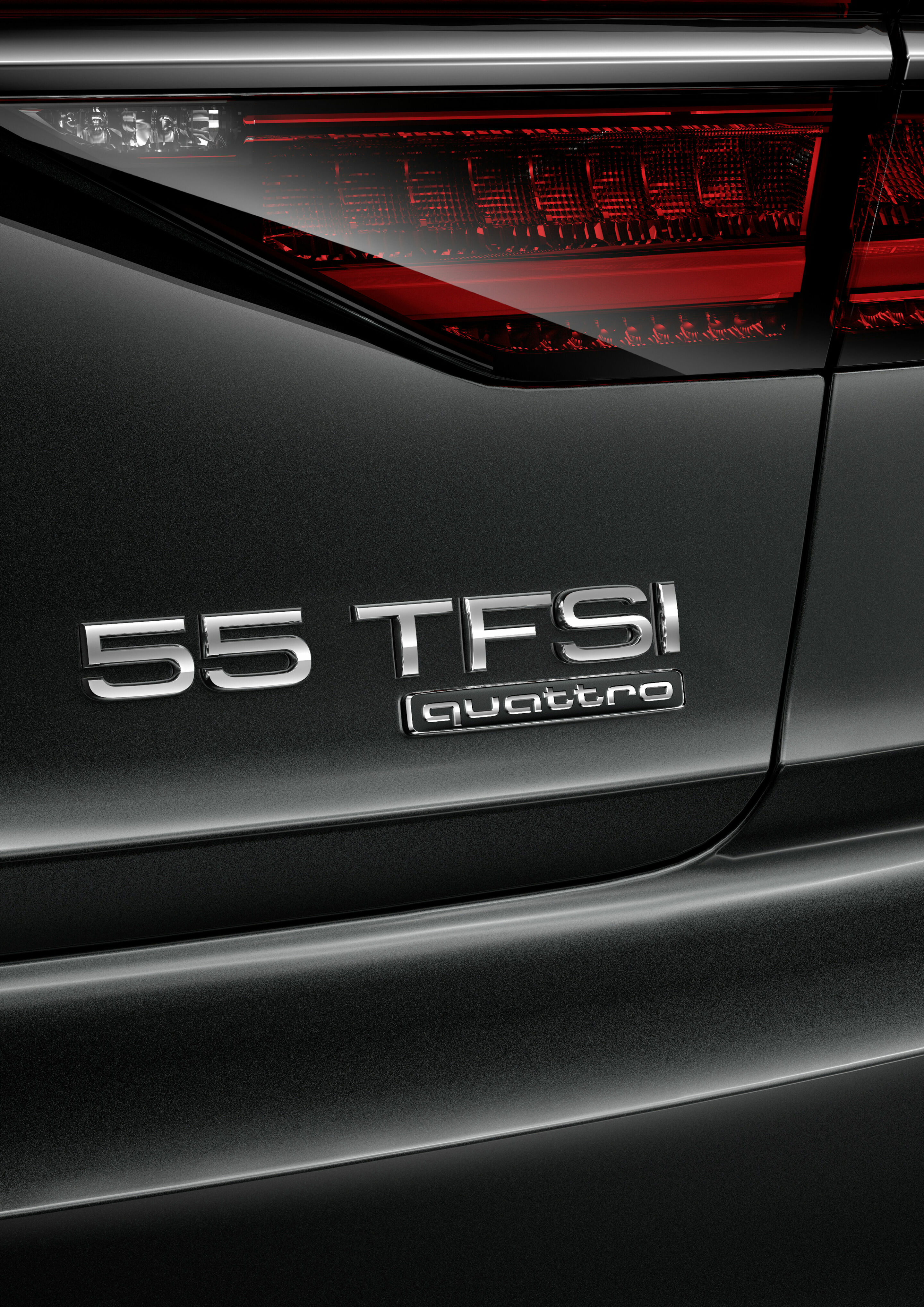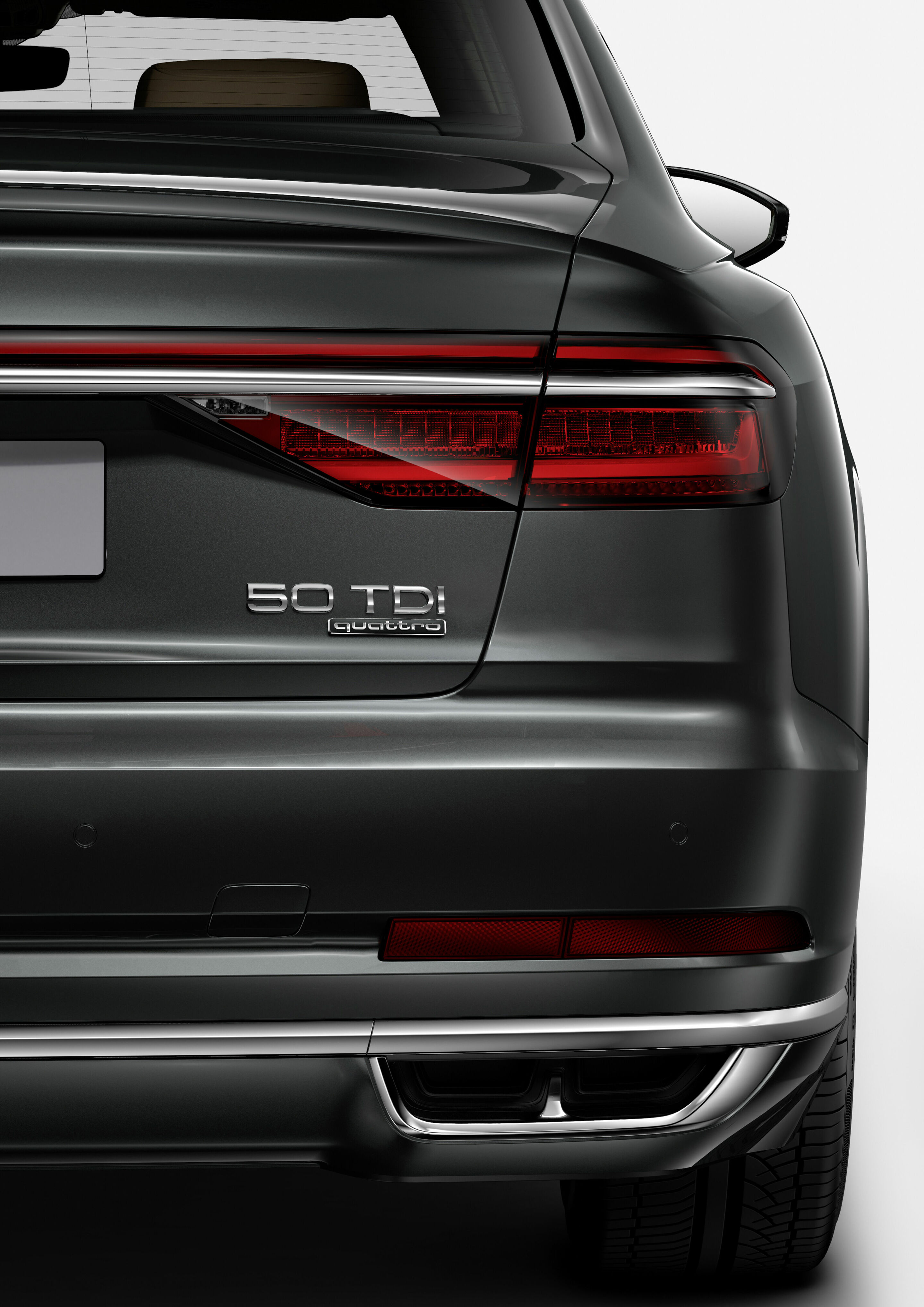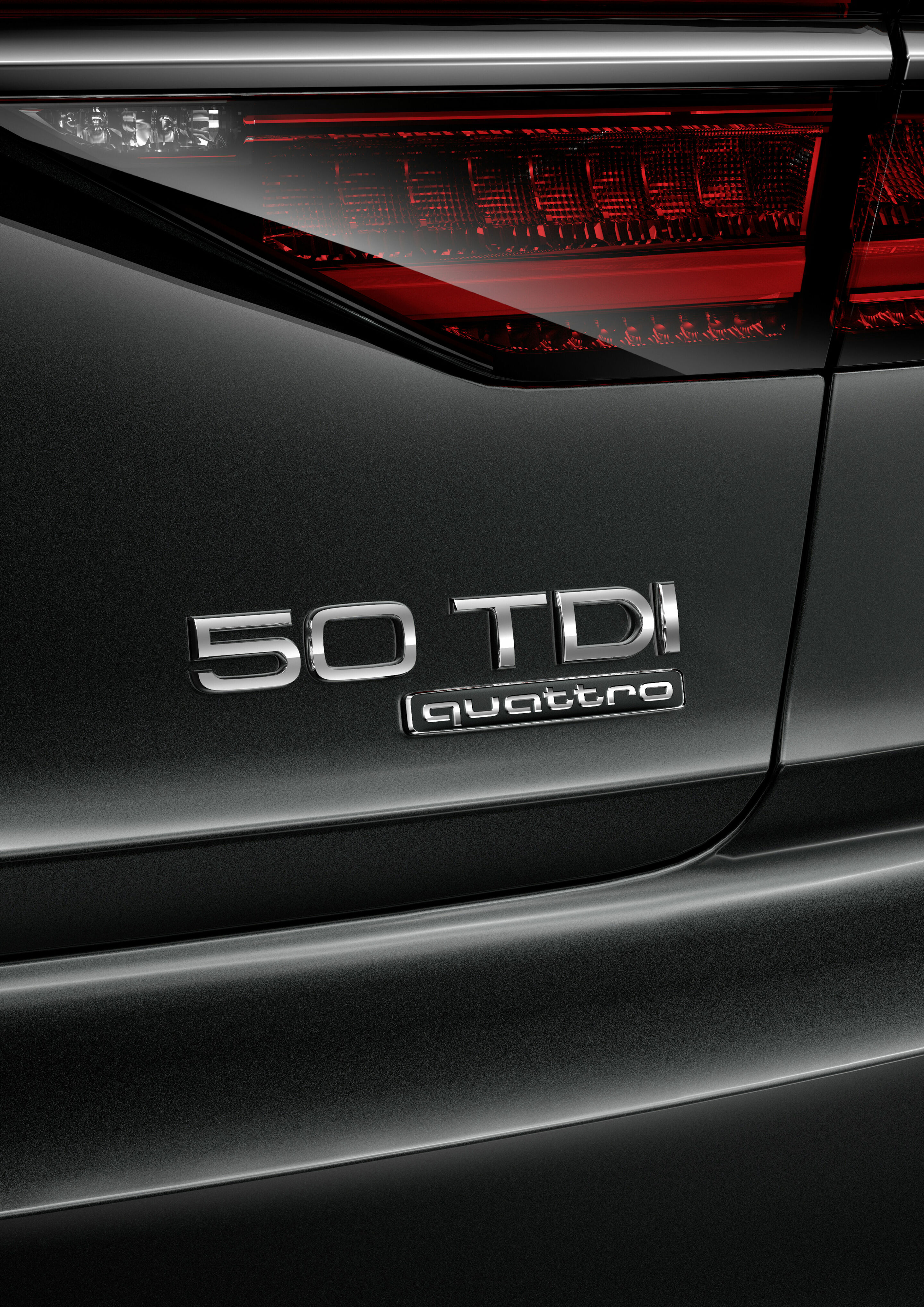Two numbers to signify the future –
new power output designations at Audi
- Designations taking effect worldwide for all drive types
- Clearly discernible hierarchy in each model series
- Audi A8 the first model with new type designation
Audi is adopting a standardized nomenclature for the power output designations of its worldwide range of automobiles. The names of the model series – from Audi A1 to Audi Q7 – will remain unchanged. Within the model families, combinations of two numbers will replace the various type designations previously used. The new designations stand for the specific power output and apply both to cars with combustion engines and to e-tron models with hybrid and electric drives.
The reference value for the new model designations is the power output of the individual model in kilowatts (kW). Audi is thus subclassifying its model range into different performance levels – each identified by a two-numeral combination. For example, the numeral combination “30” will appear on the rear of all models with power output between 81 and 96 kW. And “45” stands for power output between 169 and 185 kW. The top of the Audi model range is the performance class above 400 kW, which is identifiable by the number combination “70”. In each case the numerals appear along with the engine technology – TFSI, TDI, g-tron or e-tron.
The number combinations identifying the performance levels in the Audi product range increase in increments of five, and they represent the hierarchy within both the respective model series and the brand’s overall model range. According to the new nomenclature, in the future the spectrum will range from the Audi Q2 30 TFSI with 85 kW (combined fuel consumption in l/100 km: 5.4 - 5.1*; CO2 emissions in g/km: 123 - 117*) to the Audi Q7 50 TDI with 200 kW (combined fuel consumption in l/100 km: 6.4 - 5.9*; CO2 emissions in g/km: 168 - 154*). A special place in the line-up is occupied by the high-end, high-performance S and RS models and the Audi R8 (combined fuel consumption in l/100 km: 12.5 - 11.4; combined CO2 emissions in g/km: 292 - 272). They will retain their classic names in reference to their top position in the model range.
“As alternative drive technologies become increasingly relevant, engine displacement as a performance attribute is becoming less important to our customers. The clarity and logic of structuring the designations according to power output makes it possible to distinguish between the various performance levels,” explains Dr. Dietmar Voggenreiter, Board of Management Member for Sales and Marketing at AUDI AG.
The changes will be seen first on the new-generation Audi A8 in a few weeks’ time. For example, the 3.0 TFSI with 250 kW will be named the Audi A8 55 TFSI (combined fuel consumption in l/100 km: 7.8 - 7.5*; combined CO2 emissions in g/km: 178 - 171*).
In the coming months, all Audi model series launched on the market will be assigned the
new performance designations beginning when they are offered for sale. Audi will change the designations of the remaining model series in the current product range in time for the new model year changeover in summer of 2018.
* Figures depend on the tires/wheels used and on the transmission version, and for the Q7 also
on the number of seats
** Figures depend on the tires/wheels used and on the body version
